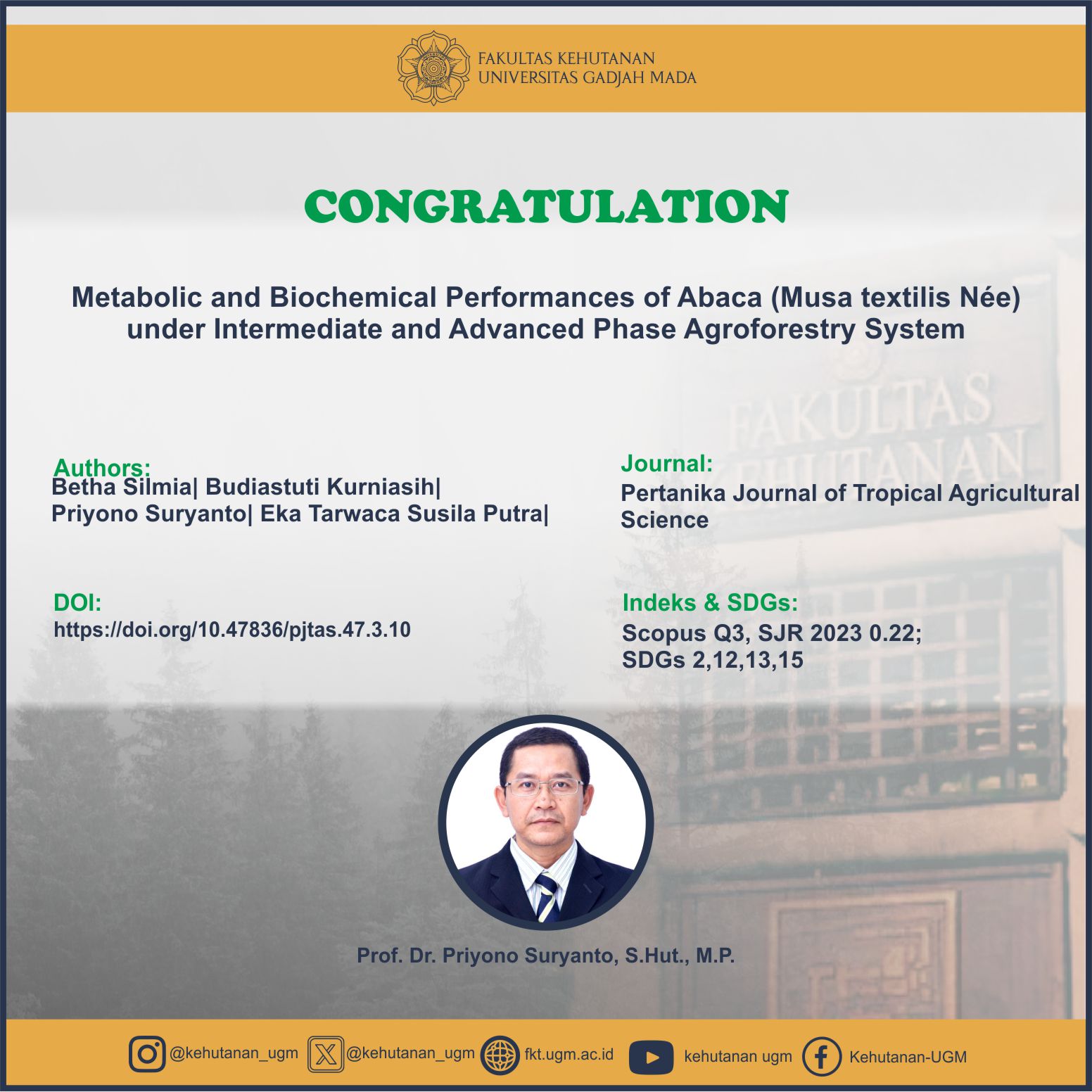
Abstract
Abaca, one of the potential fiber crops with high-quality fiber and promising economic value, is mainly established under the agroforestry system, for it is considered a non-primary crop. The study aims to observe the metabolic and biochemical performance as well as the fiber quality of abaca under the agroforestry system. The experimental design used in this study was nested with two types of agroforestry systems, i.e., intermediate phase (Fase Tengah, FT) and advanced phase (Fase Lanjutan, FL) and was conducted during the rainy season. Parameters observed in this study were divided into edaphic and climatic parameters, oxidative response parameters, foliage macro- and micronutrient, and fiber quality. Despite poor soil quality compared to FL, higher relative humidity (4.35%), lower temperature (2.73%), and lower shading intensity were observed in FT. Improved soil characteristics in FL, viz. soil water content (19.64%), organic carbon (72.89%), porosity (4.29%), cation exchange capacity (13.77%), and pH (35.13%), were unable to compensate plant stress induced by the high shading intensity at 83.99%. Consequently, it contributed to higher levels of malondialdehyde, superoxide anion, hydrogen peroxide, superoxide dismutase, peroxidase, and phenol by 0.07%, 1.86%, 32.66%, 0.08%, 14.63%, and 35.08%, respectively, due to shading stress. Nevertheless, ascorbic acid content in FL was lower (18.90%) compared to FT. Higher fiber diameter (23.53%) and tensile strength (18.77%) of abaca in FT were observed compared to FL. The improved microclimatic conditions under FT promoted the high adaptability of abaca to poor soil quality. Therefore, it contributed to enhanced growth and fiber quality compared to FL. Pruning is pivotal to managing shading intensity.
SDGs:
SDG 2:Zero Hunger
SDG 12:Responsible Consumption and Production
SDG 13:Life on Land
SDG 15:Climate Action
Link Dokumen:
Download
